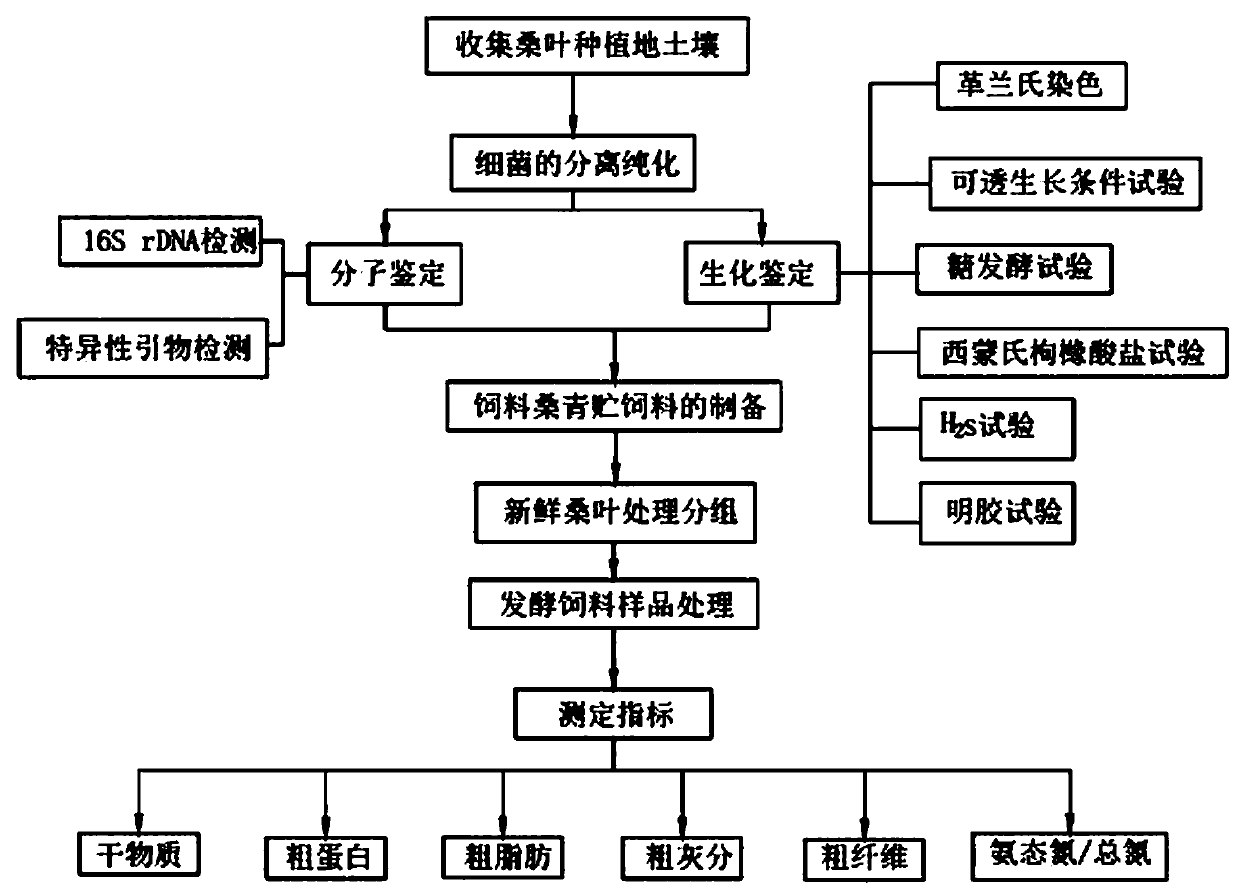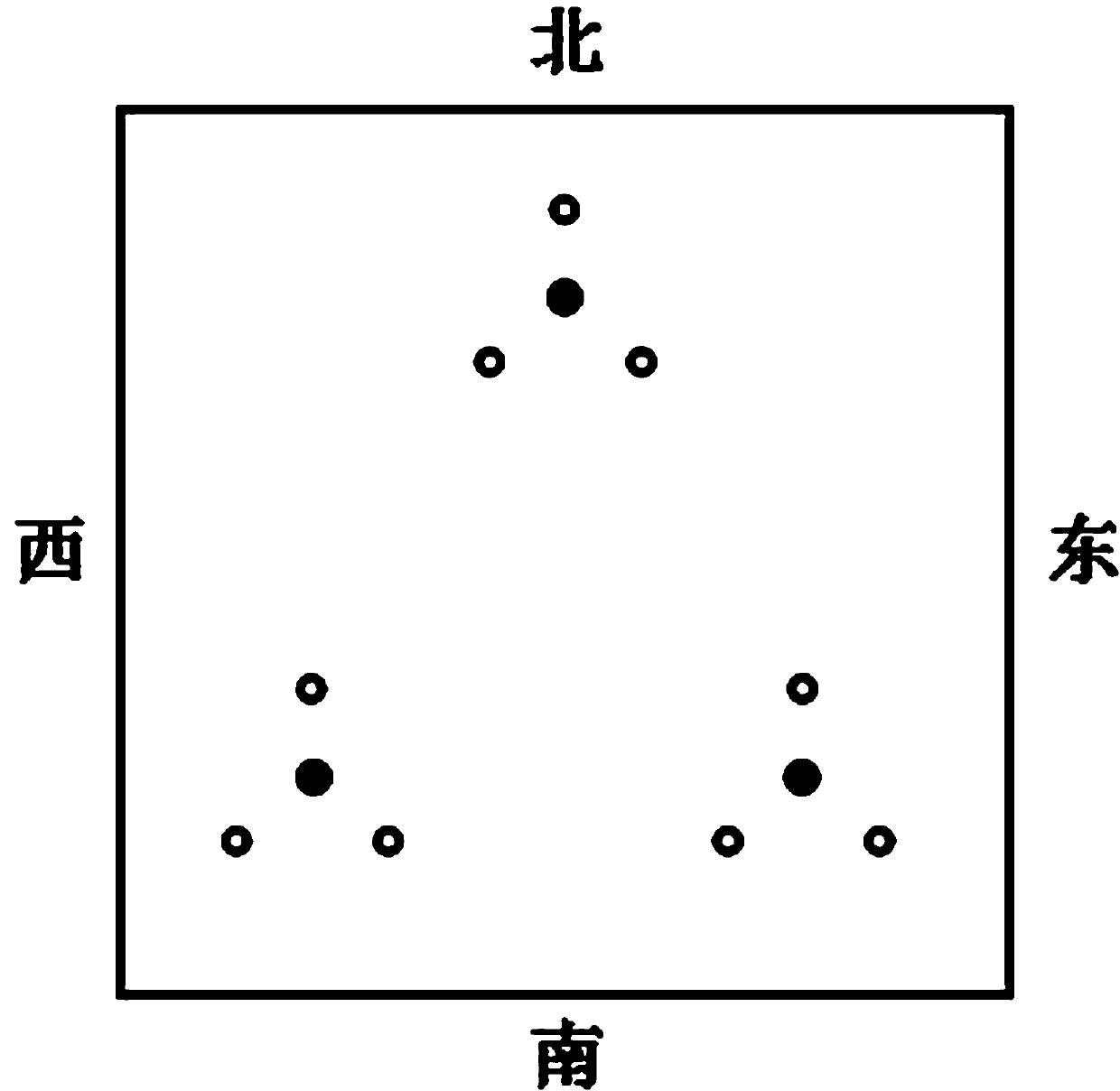Bacillus licheniformis, screening method, application and feed containing bacillus licheniformis
A technology of Bacillus licheniformis and screening method, which is applied in the field of microbial screening and application, can solve the problems of poor palatability, difficulty in long-term storage, and high ratio of mulberry leaf feed, and achieve the effects of improving the quality of feed mulberry silage, reducing the degree of decomposition, and improving digestion
- Summary
- Abstract
- Description
- Claims
- Application Information
AI Technical Summary
Problems solved by technology
Method used
Image
Examples
Embodiment 1
[0041] Such as figure 1 Shown, a kind of screening method of bacillus licheniformis comprises the following steps:
[0042] S1, collect soil samples: adopt three-point method to collect 90g of mulberry leaf planting soil;
[0043] Such as figure 2 Shown, the concrete steps of described three-point method collecting mulberry leaf planting land soil are:
[0044]S101. Select the densely grown soil of mulberry leaves in the north, southwest and southeast of the mulberry leaf planting base respectively, and the sampling points are as follows: figure 2 Shown by the black dots in ●;
[0045] S102. Collect soil samples in the north, southwest and southeast of the sampling point ●, such as figure 2 As shown in the hollow circle О, and mix well.
[0046] S2. Cultivation and separation of bacterial strains: put the collected soil samples in a sterile Erlenmeyer flask filled with 800ml of PBS, shake well for 18 minutes to dilute the soil samples into a sample suspension, and then...
Embodiment 2
[0071] Such as figure 1 Shown, a kind of screening method of bacillus licheniformis comprises the following steps:
[0072] S1, collect soil sample: adopt three-point method to collect 110g of mulberry leaf planting soil;
[0073] Such as figure 2 Shown, the concrete steps of described three-point method collecting mulberry leaf planting land soil are:
[0074] S101. Select the densely grown soil of mulberry leaves in the north, southwest and southeast of the mulberry leaf planting base respectively, and the sampling points are as follows: figure 2 Shown by the black dots in ●;
[0075] S102. Collect soil samples in the north, southwest and southeast of the sampling point ●, such as figure 2 As shown in the hollow circle О, and mix well.
[0076] S2. Cultivation and separation of bacterial strains: put the collected soil samples in a sterile Erlenmeyer flask filled with 1000ml of PBS, shake well for 22 minutes to dilute the soil samples into a sample suspension, and th...
Embodiment 3
[0101] Such as figure 1 Shown, a kind of screening method of bacillus licheniformis comprises the following steps:
[0102] S1, collect soil sample: adopt three-point method to collect 100g of soil of mulberry leaf planting place;
[0103] Such as figure 2 Shown, the concrete steps of described three-point method collecting mulberry leaf planting land soil are:
[0104] S101. Select the densely grown soil of mulberry leaves in the north, southwest and southeast of the mulberry leaf planting base respectively, and the sampling points are as follows: figure 2 Shown by the black dots in ●;
[0105] S102. Collect soil samples in the north, southwest and southeast of the sampling point ●, such as figure 2 As shown in the hollow circle О, and mix well.
[0106] S2. Cultivation and separation of bacterial strains: put the collected soil samples in a sterile Erlenmeyer flask filled with 900ml of PBS, shake well for 20 minutes to dilute the soil samples into a sample suspension...
PUM
| Property | Measurement | Unit |
|---|---|---|
| length | aaaaa | aaaaa |
| thermal resistance | aaaaa | aaaaa |
Abstract
Description
Claims
Application Information
 Login to View More
Login to View More - R&D
- Intellectual Property
- Life Sciences
- Materials
- Tech Scout
- Unparalleled Data Quality
- Higher Quality Content
- 60% Fewer Hallucinations
Browse by: Latest US Patents, China's latest patents, Technical Efficacy Thesaurus, Application Domain, Technology Topic, Popular Technical Reports.
© 2025 PatSnap. All rights reserved.Legal|Privacy policy|Modern Slavery Act Transparency Statement|Sitemap|About US| Contact US: help@patsnap.com



